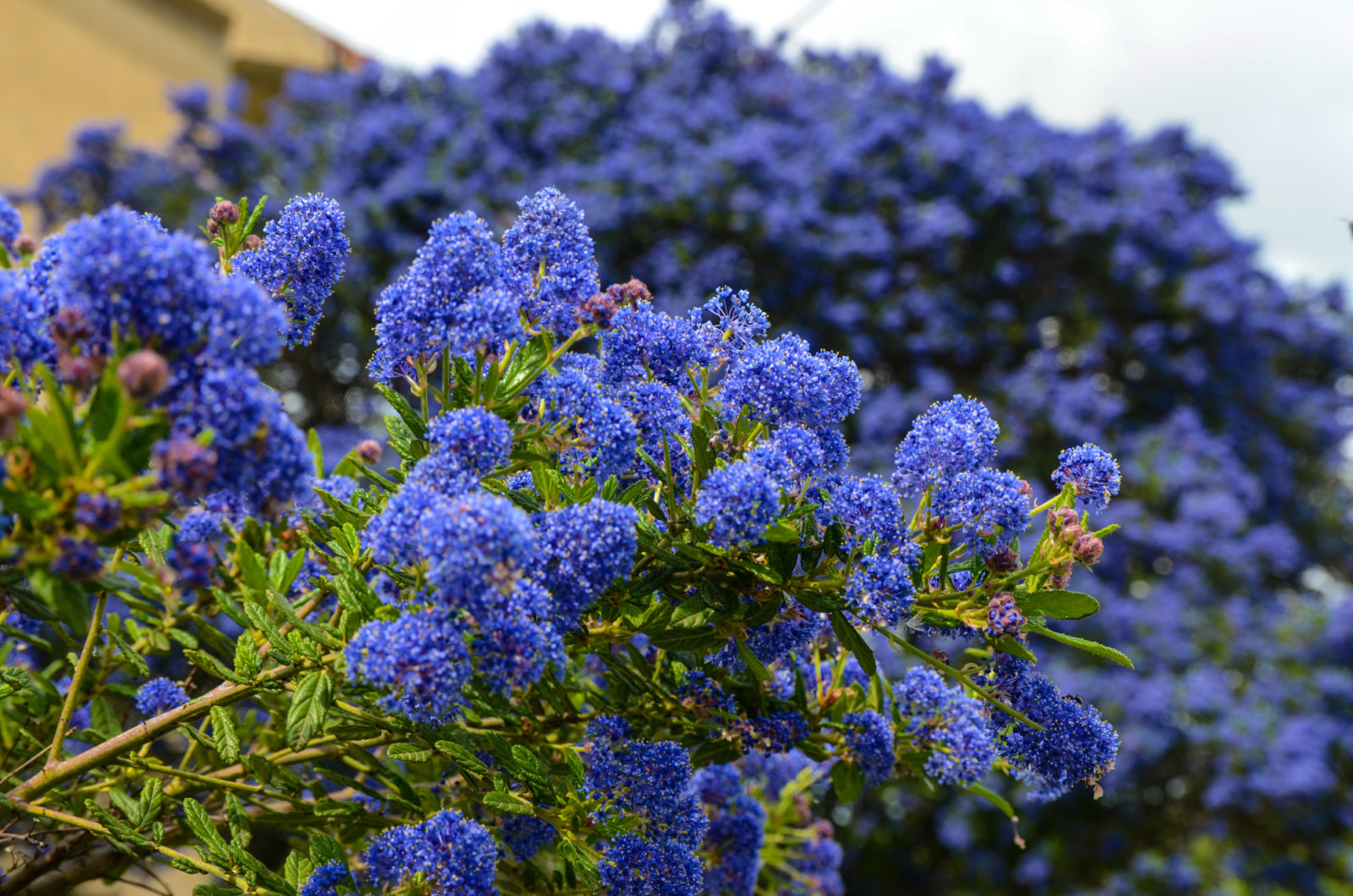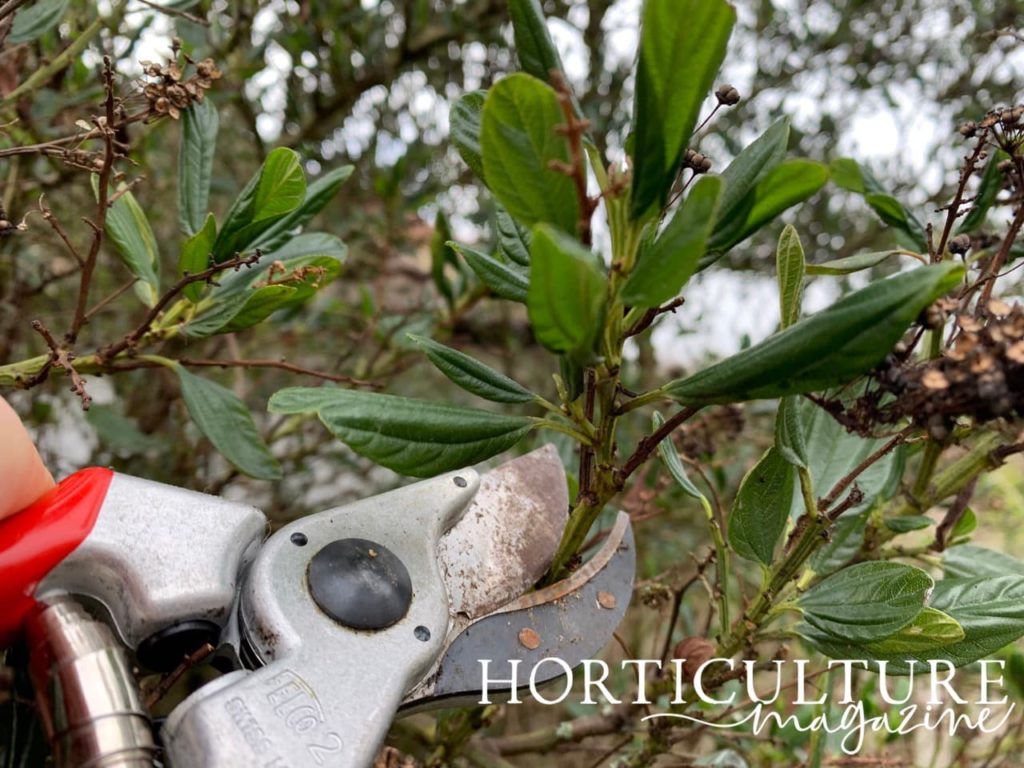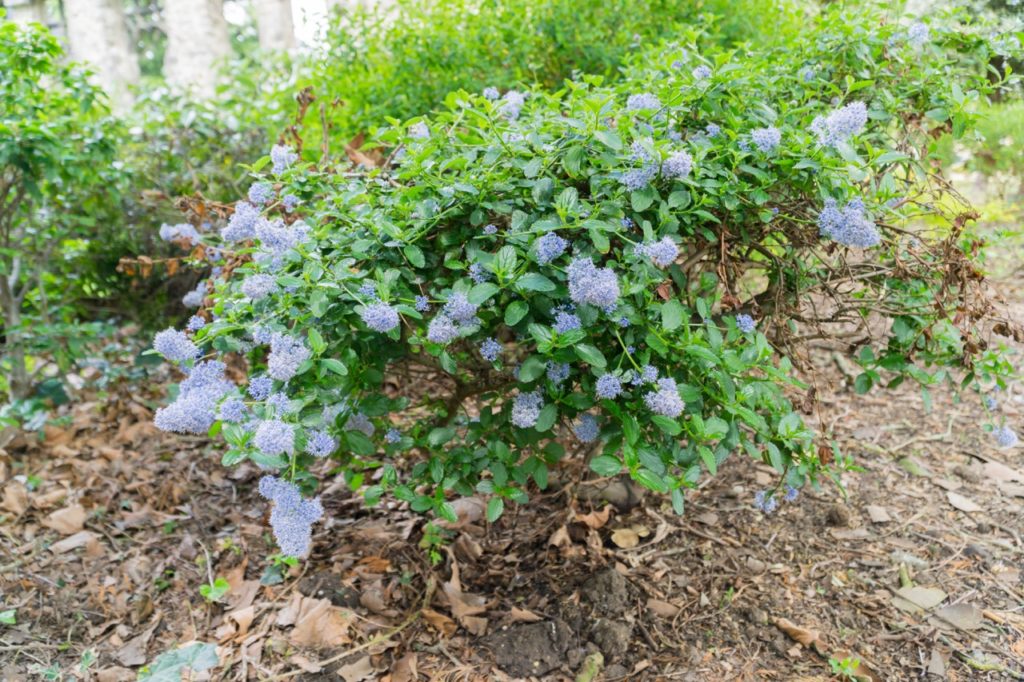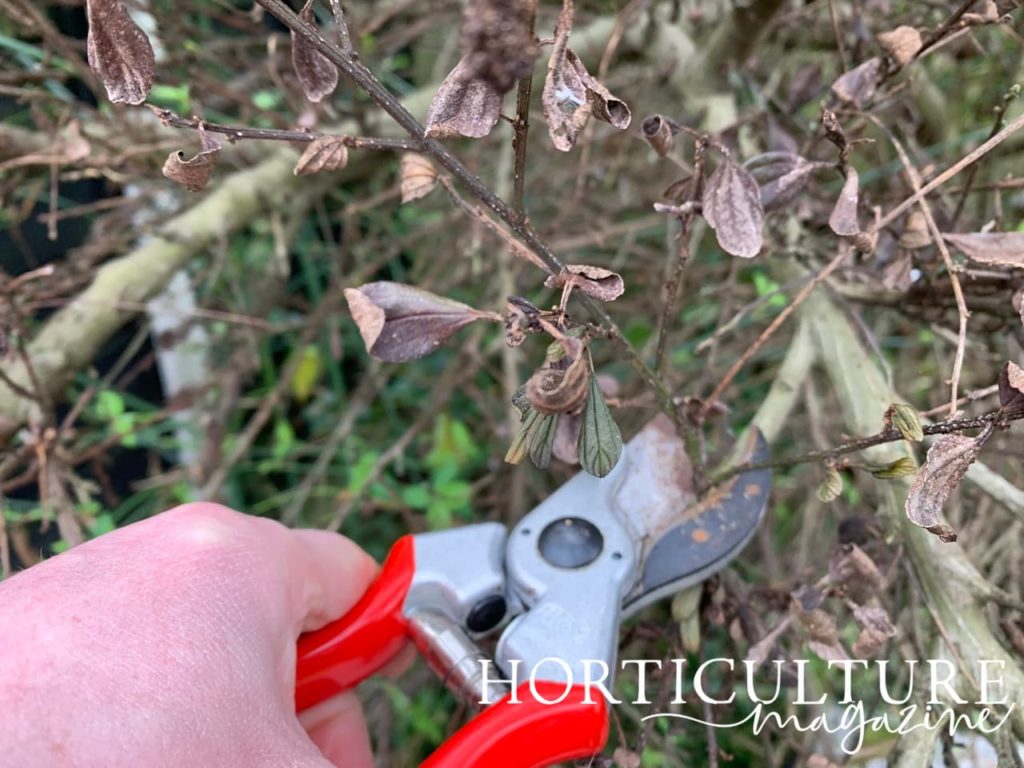Pruning Ceanothus: ‘Only Cut Back Into The Green Section Of Stems’ Says Horticulturist


Elizabeth is a Permaculture Garden Designer, Sustainability Consultant and Professional Writer, working as an advocate for positive change. She graduated from the University of St. Andrews with an MA in English and Philosophy and obtained a Diploma in Applied Permaculture Design from the Permaculture Association.
Reviewed By ROY NICOL

Roy is a Professional Gardener and Horticultural Consultant, specialising in large garden year-round maintenance and garden development. He is an RHS Master of Horticulture and uses his research in the application of no-dig methods in ornamental garden settings. Roy has been a Professional Gardener for more than six years and is a member of the Chartered Institute of Horticulture, Professional Gardener's Guild and Association of Professional Landscapers (Professional Gardener).
IN THIS GUIDE
CEANOTHUS GUIDES
Container Growing
Cuttings Propagation
Discoloured Leaves
Pruning
Varieties
Ceanothus are flowering shrubs that can look great and also fix nitrogen, making them beneficial in many gardens.
Although they are not native to the UK, they are commonly grown here and can thrive in the conditions that many of our gardens will readily provide.
These shrubs are relatively easy to care for when placed in the right position, but pruning is something you should definitely think about when growing a ceanothus.
“Ceanothus can become large if not pruned, so pruning long thin stems back by up to half their length, after flowering time, can help keep the plants more compact,” says Horticulturist Peter Lickorish.
“Pruning into woody growth, however, is not always a good idea for evergreen Ceanothus, which may struggle to grow back.”
You should always at least remove spent blooms or deadhead new growth to keep a healthy appearance.

Personally I find that my tree grows so vigorously that I’m forced to prune it at least once a year (sometimes even to prevent it from growing into my neighbour’s guttering!).
| Difficulty | Medium |
| Equipment Required | Secateurs or gardening shears |
| When To Prune | Varies by type |
The process for pruning ceanothus depends on whether you are dealing with an evergreen or deciduous shrub and the flowering seasons:
Pruning Evergreen Types
Spring Flowering Varieties
These evergreens don’t necessarily need regular maintenance pruning.
However, they are typically lightly pruned immediately after flowering, when flowering stems can be cut back by up to around one-third of their length.

“It’s best to only cut back into the green section of stems as the older woody brown stems may not regrow after pruning and could leave the shrub looking bare or worse, they could initiate die-back and lead to larger sections of the shrub having to be removed,” shares Professional Gardener Roy Nicol.
When growing these plants in a more confined space or as informal hedging, you can also cut back again later in summer if required to maintain their shape and compact form.
Autumn Flowering Varieties
Evergreen ceanothus plants which bloom later in the year bear their flowers on the growth of the current season and sometimes also have a flush of spring flowers on shoots that grew the previous season.
With these shrubs, it is best to prune them in spring.

You should aim to reduce the previous season’s growth by around a third when tidying up is required.
Pruning Deciduous Types
Deciduous ceanothus shrubs bloom in late summer and autumn and their pruning is a little more complex than that of evergreen types.

They do tend to need more regular attention when it comes to this gardening job in order to ensure that they continue to flower well.
These shrubs bear flowers on new growth, so it is best to prune them in early to mid-spring in order to encourage the formation of strong, fresh shoots each year.
When you first plant a ceanothus of this type, the pruning strategy will be somewhat different from that used for pruning established, mature plants.
To develop a good framework of branches:
- Shorten all the stems by two-thirds in the first year.
- In the second year, prune the previous year’s growth by around 2/3 and shorten any side shoots to 10-25cm from the main stems.
- Once the plant is well established in its third year after planting, reduce the length of the main flowering stems by around 50%. Cut back the weaker side shoots fairly hard, leaving a couple of buds from the main stems. You can also consider cutting out congested and unproductive old wood from the centre of the shrub to keep it performing and flowering well.
Renovating Mature Shrubs
Evergreen ceanothus does not tend to respond well to hard pruning when renovating an older shrub.
So, if a plant has become woody and overgrown, it is usually best to replace it rather than attempt to prune it to give it a new lease of life.
Deciduous ceanothus shrubs, on the other hand, are generally easier to renovate.

These shrubs can tolerate hard pruning and can even recover from being pruned down to the ground in many cases, though the response will be slow.
Hard pruning of deciduous ceanothus is usually carried out in late February or March.
After cutting back the plant as much as is required, promote strong regrowth by spreading an organic mulch around the base of the plant.
Pruning Wall-Trained Types
Ceanothus of some types can be trained to cover a wall or fence.
Pruning strategies specific to ceanothus used in this way will help to make sure that a well-balanced framework of branches is developed to create the desired effect without the plant outgrowing its location.
The pruning times and techniques for wall-trained ceanothus still depend on which type you are dealing with, so you will need to take into account the notes on pruning evergreen and deciduous types given above.
However, you will also need to consider specific techniques for training as a wall shrub.
You will need to think about supports, ties, placement and about pruning to create a basic framework of branches, whilst also removing any weak, spindly growth.

Then, once a wall-trained ceanothus is established, you should shorten side shoots to within 2-4 buds of the main framework of branches – and remove any shoots that are weak, straggly or growing towards the wall or fence.
Pruning ceanothus is not complex once you have determined which type you have, but it is important to think about this gardening job to keep your ceanothus, of whatever type, looking its best.
“I have found the key to maintaining evergreen Ceanothus is to lightly prune each year after flowering as described above,” shares Roy.
“If these shrubs are allowed to become large and leggy, it’s already too late to reduce them as that would require pruning into the older wood which will not regrow.
“This is a job to put in the gardening diary!”
